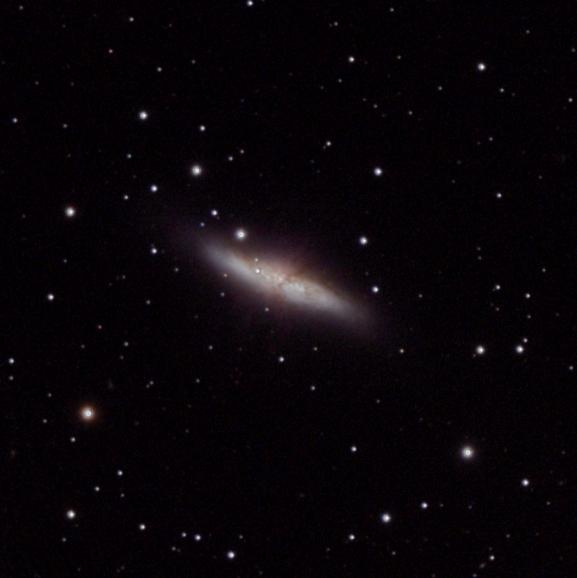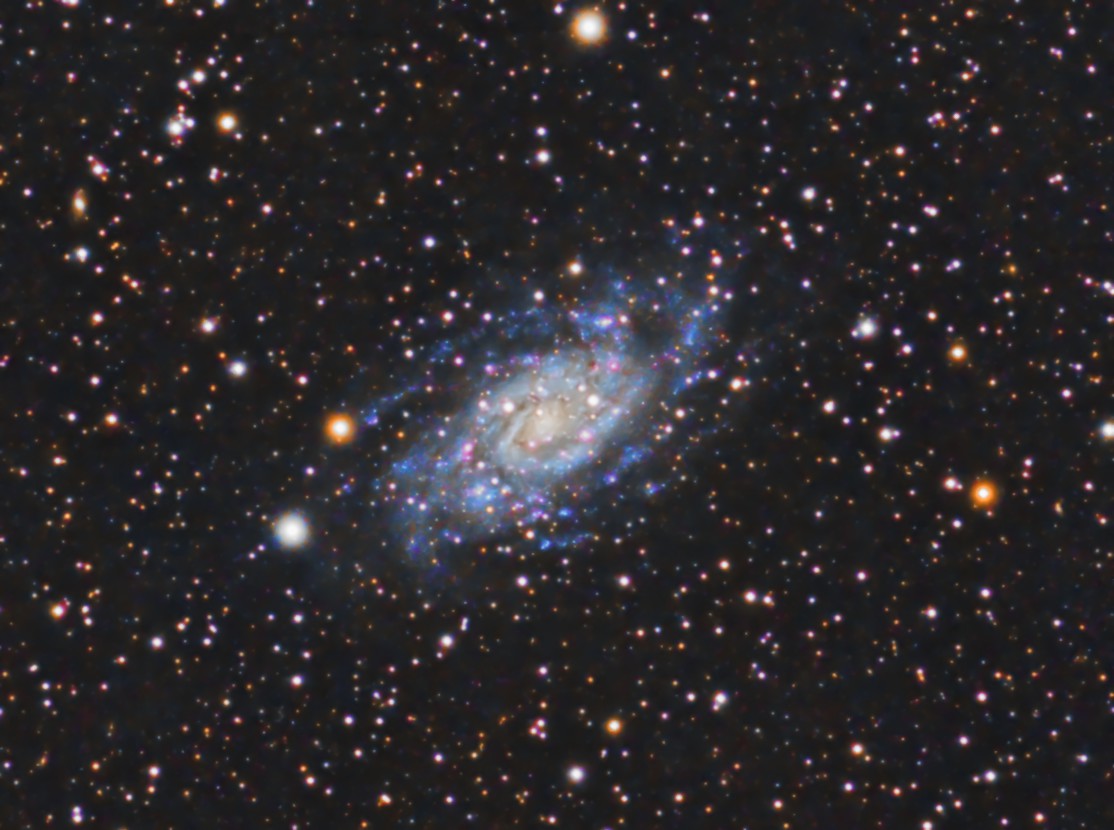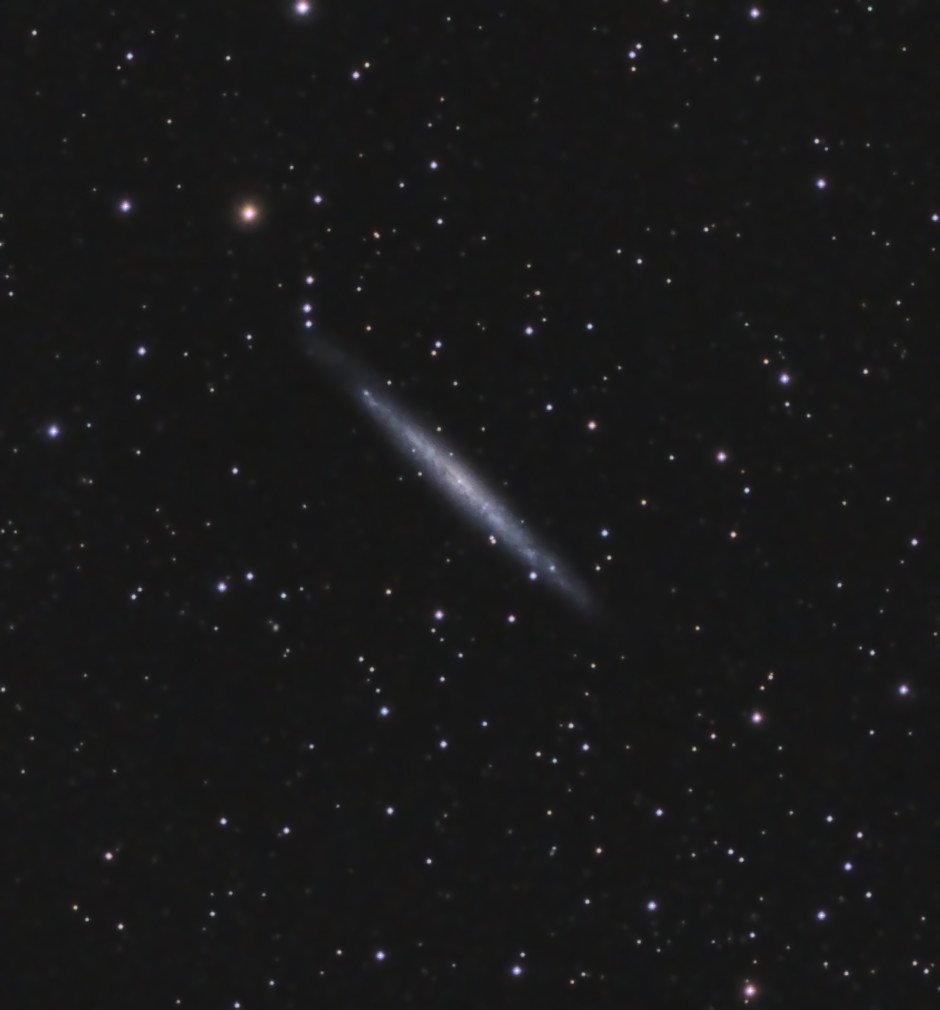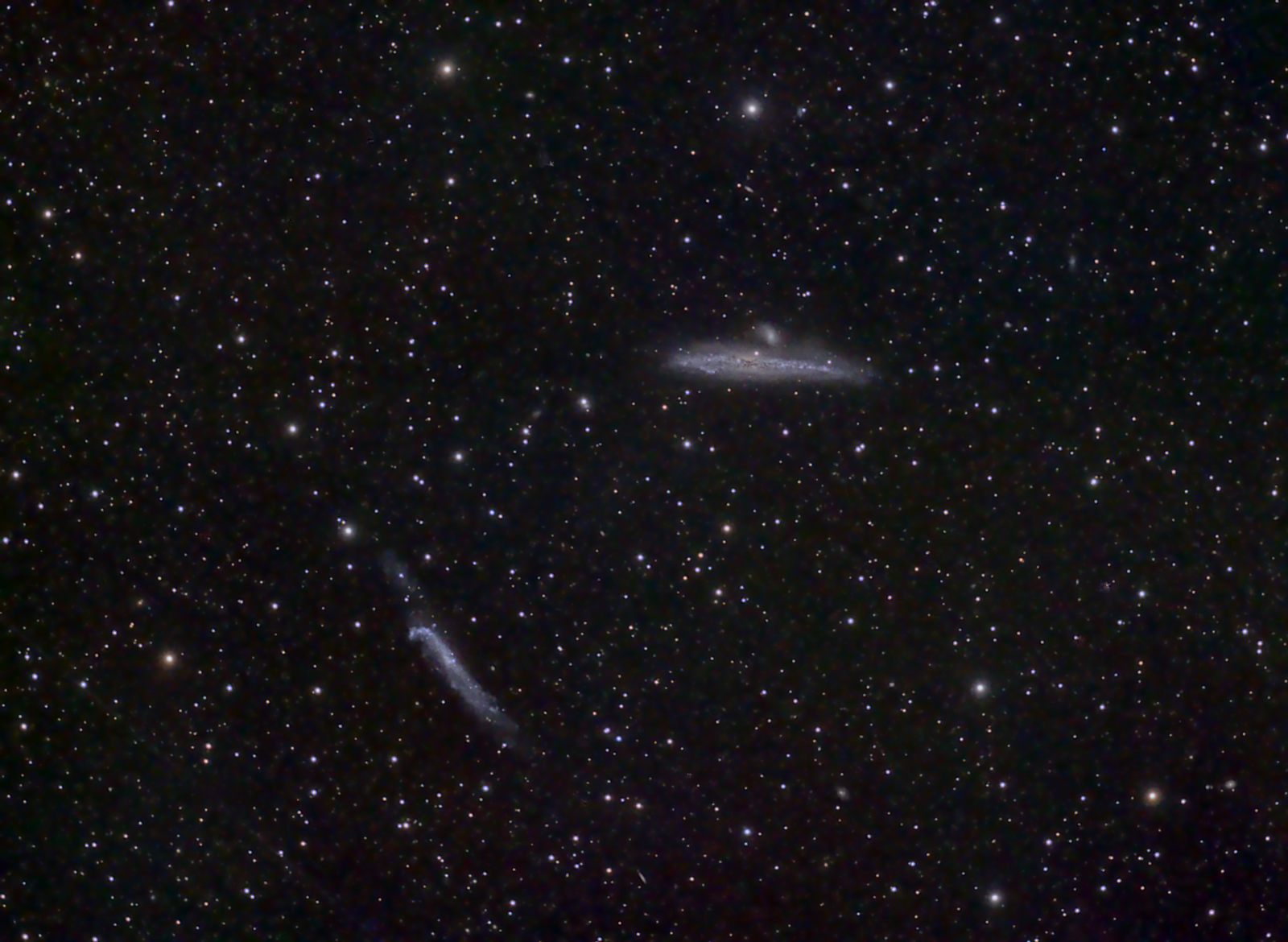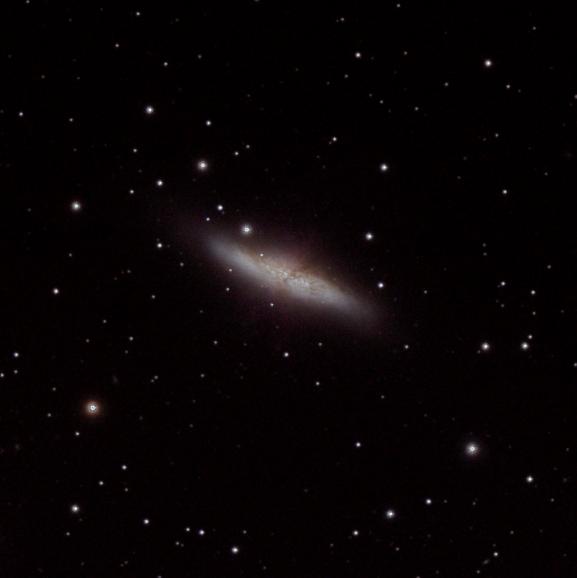Looking back through my image archive I found a couple of hours worth of images of NGC2403 in Camelopardalis that I took in 2014. Over a couple of clear nights during the past week I added another 8 hours to this and an initial process is quite promising.
Category: Galaxy
I acquired the data for this object some time ago and I’ve been struggling with the processing ever since. The real challenge has been the extreme difference in brightness between the inner core of the galaxy and the outer diffuse halo. After some help from the PixInsight forum this is the current state of processing.
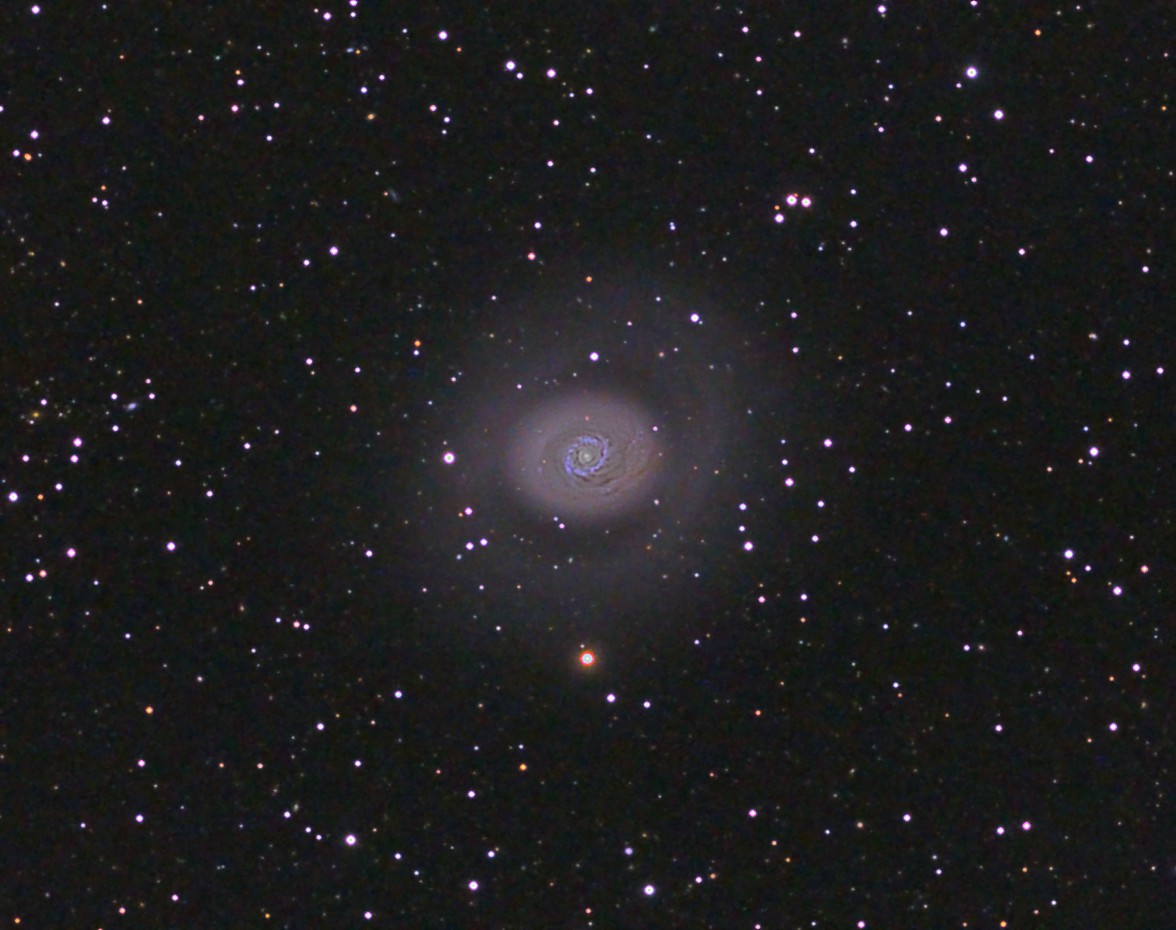 I’m not totally satisfied with this yet as the brighter stars have been damaged and I’ll need to go back and make another attempt when I get time.
I’m not totally satisfied with this yet as the brighter stars have been damaged and I’ll need to go back and make another attempt when I get time.
I’ve had a longer term project running for a while to image Abell 31. As this object is in Cancer it’s now too late in the year to accumulate further sub-frames so I’m going to have to make do with what I have. Altogether though, this now amounts to about 20 hours so I’ll have to knuckle down and process a final result. In the meantime, I’ve been messing with some brighter objects and this is one, NGC 4244 in Canes Venatici. A nice sized, edge on spiral galaxy. Image is comprised of 20 ten minute sub-frames.
A bank holiday beckoned and the forecast was much better on the coast for Saturday night so we packed the van and headed for a new destination near the club dark site at Haw Wood Farm. This site is a little further south at a small village called Middleton and closer to the towns of Leiston and Saxmundham than Haw Wood but the light pollution was still pretty minimal for the UK. The site is a Camping & Caravan club certificated site called Golden Acres. It’s a grass field with good horizons spoilt only by a small wind turbine in the middle so site your telescope carefully. The light switches for the toilet block were easy to find and I turned them off after everyone else had gone to bed after midnight and the full beauty of the sky here was revealed.
I started with some more images of my current galaxy project (NGC 4236) but once I’d realised that M4 was an easy binocular object even though it was only 10 degrees above the horizon I took a few 10 minute frames before it got too low. It did feel slightly odd taking pictures with the telescope tube almost horizontal and this is something I’d not be able to do at home with the Thetford light pollution due south of me.
The last picture I took was on the Sunday morning just as the sky was beginning to lighten after 2am. This is the Small Sagittarius Star Cloud (M24) and it was only 18 degrees above the horizon. This is a single 10 minute frame taken with the QHY9 and the Baby-Q, processed with Pixinsight.
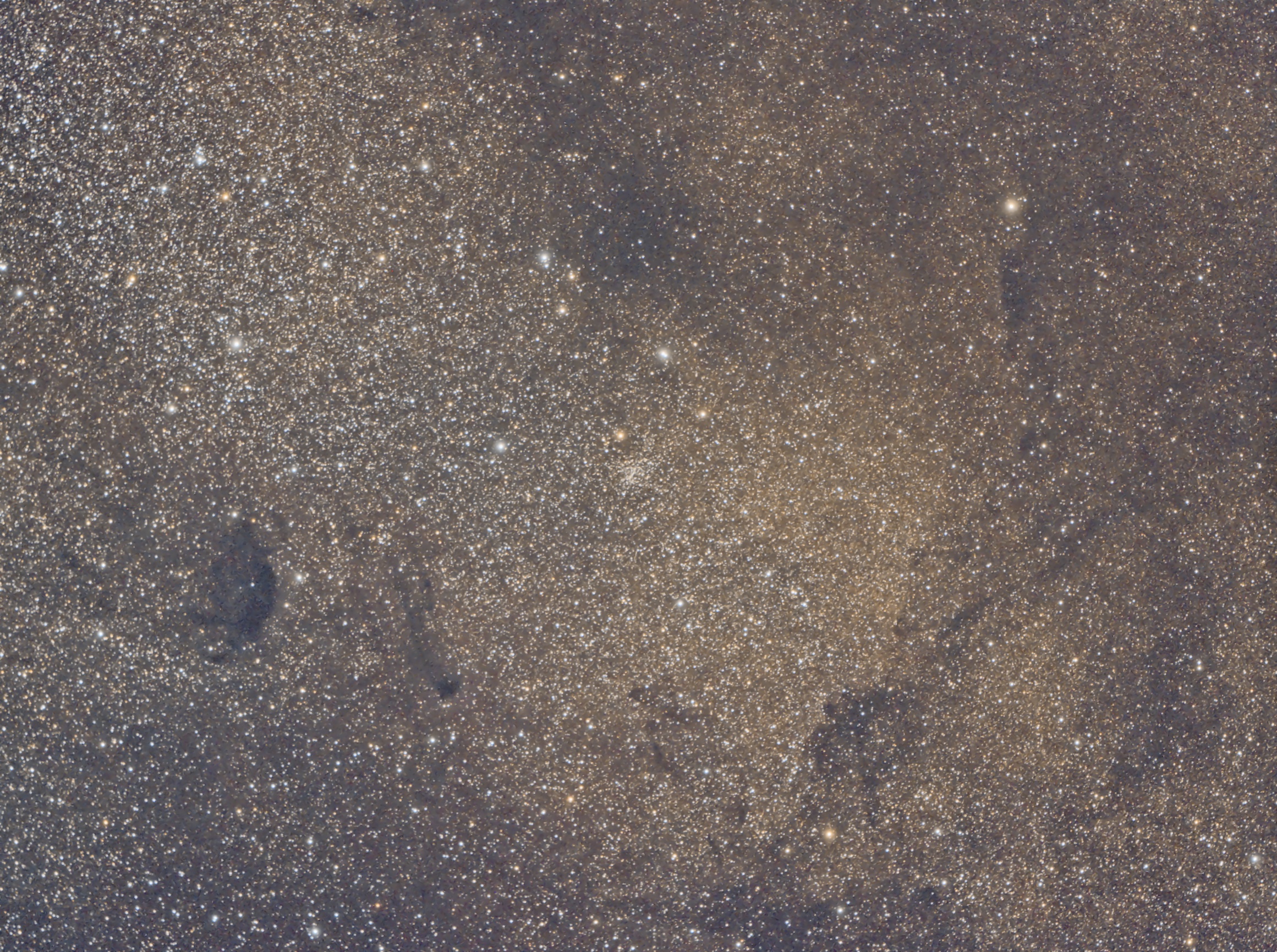
I’m beginning to feel some understanding with Captain Ahab and his obsessive tendency towards Cetacea. This has been rather a mission this spring and with weather keeping the imaging sessions short I’ve had to keep returning whenever possible.
The last two sessions I’ve experimented with increasing the subframe exposure time to 20 minutes. This has some major benefits in increasing the signal to noise ratio with some downsides in increasing bright star saturation and reducing the number of exposures to stack. Some further improvements may be gained by going to 30 minutes but, having shot 9 hours worth of 20 minute dark frames the other night I may as well get some use out of them. A darker sky may be required as the exposure length increases.
To incorporate the new exposures in the existing stack I’ve simply calibrated them and then scaled by 50% using PixelMath to match the existing 10 minute subframes.
I’ve worked rather harder in Pixinsight to retain star colour while, at the same time reducing the colour noise in the background. Star masks are invaluable in this and they’re really easy to create using Pixinsight.
This marks the end of data collection on this target for the year as it’s now past culmination by the end of astronomical twilight and the nights are getting shorter. Total time on this is now about 8 hours.
A clear evening, the moon approaching third quarter and a long weekend courtesy of the Easter bank holiday; what to do…
No debate really; add some data to my Whale and Hockey Stick picture. Originally started at the Kelling Heath star party, I’ve subsequently added another 2 hour set and this was the third, taking me up to 6 hours in total.
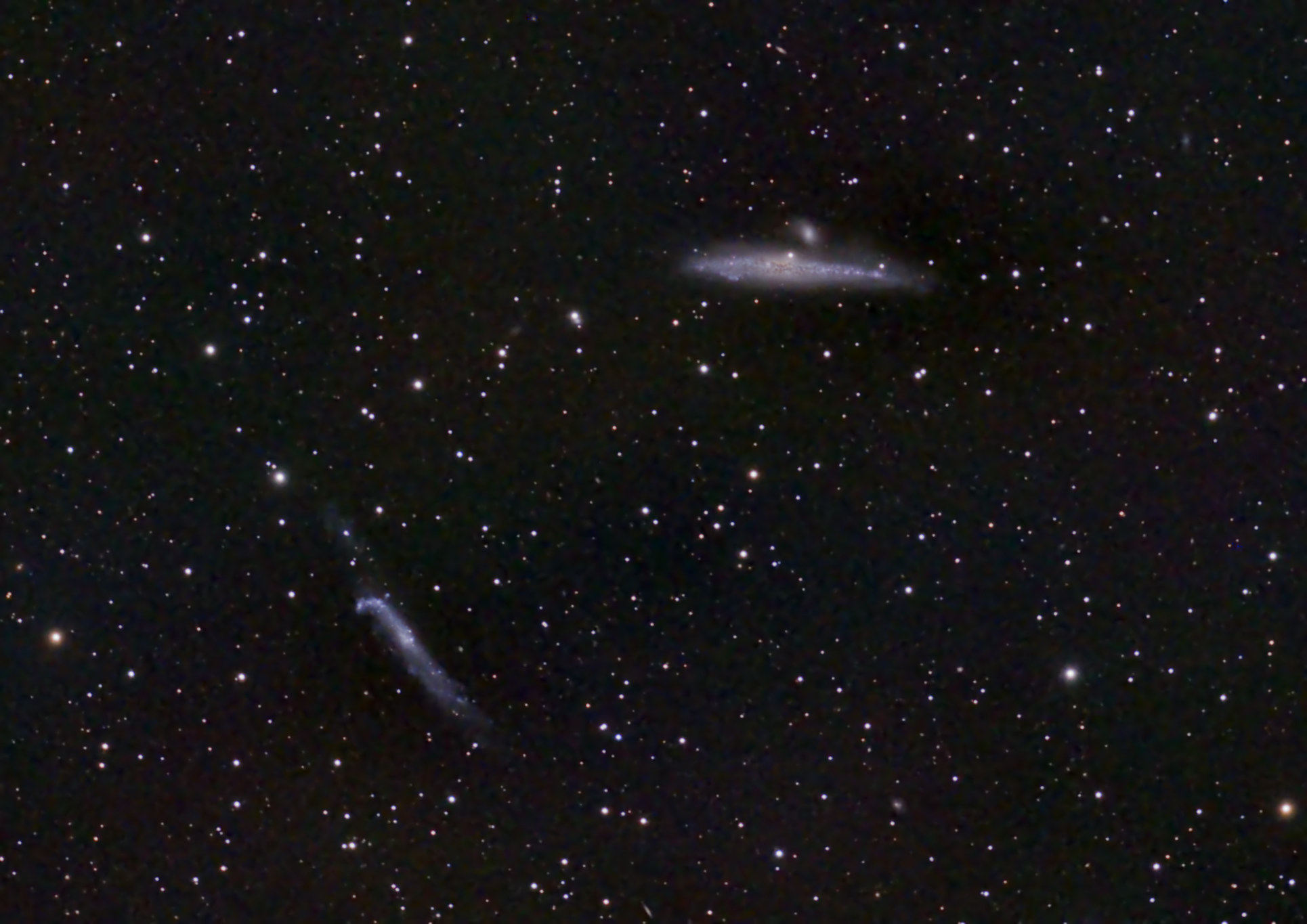 Replacing the Belkin USB hub with a Startech has stopped the lockups of the guider. I’ve still got a dry solder joint to track down in the power supply somewhere. I have my suspicions but I’m aiming to replace the cigarette lighter sockets with something a lot more substantial in the near future.
Replacing the Belkin USB hub with a Startech has stopped the lockups of the guider. I’ve still got a dry solder joint to track down in the power supply somewhere. I have my suspicions but I’m aiming to replace the cigarette lighter sockets with something a lot more substantial in the near future.
Stacked in Maxim DL
Processed with Pixinsight
Despite a first quarter moon in the sky I couldn’t pass up the chance of a clear night so last Tuesday I set up in the back garden. Things didn’t go exactly to plan and a Netbook reboot at 3am for Windows updates cost me a few hours but I did get 2 hours 20 in 10 minute subframes of a galaxy triplet in Coma before then. The central galaxy is NGC 4216.
 As this is part of the Coma cluster there are a lot of other galaxies in the field as well.
As this is part of the Coma cluster there are a lot of other galaxies in the field as well.
Processed in Maxim DL and Pixinsight.
In between the high cirrus clouds that were prevalent over the Kelling star party last weekend I got a couple of hours worth of exposures of these galaxies in Canes Venatici. (ngc 4631, 4627, 4656 & 4657). Because they’re both fairly large at 16 arc minutes they make a nice combination for the Baby-Q and QHY9. This combination produces a pixel scale of 2.475″/pixel which is a little coarse for imaging the finer detail in galaxies but with the UK’s pretty average seeing conditions probably isn’t too under-sampled most of the time.
The Hockey stick has two NGC numbers; 4656 which is the core and 4657 which is the bright knot at the distorted eastern end. This distortion is due to interaction with the Whale and both galaxies are at a distance of 30 million light years.
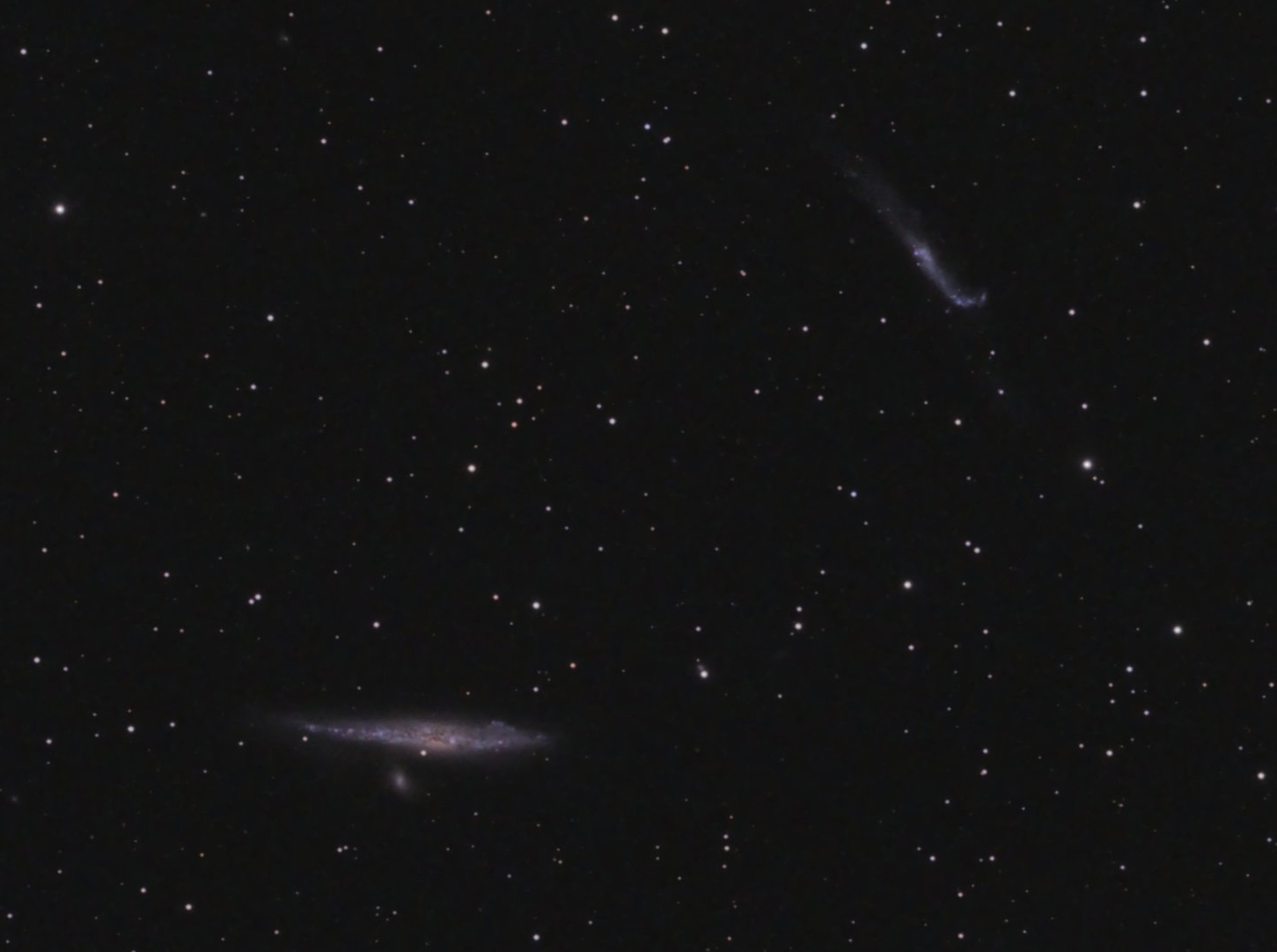 Acquiring some more data will help bring up more faint detail in the galaxies. I’m very pleased with the colour rendition by this telescope / camera combination in both this image and the previous Leo Triplet image.
Acquiring some more data will help bring up more faint detail in the galaxies. I’m very pleased with the colour rendition by this telescope / camera combination in both this image and the previous Leo Triplet image.
Back at the beginning of March I took a couple of hours worth of 10 minute exposures of the Leo Triplet (M65, M66 & NGC3628). Having stacked them in Maxim as I normally do I found that the intensities were very wrong when opening the fits file in Pixinsight for further processing. I haven’t got to the bottom of this yet but I’ve re-calibrated and stacked using Pixinsight instead which has worked around the problem.
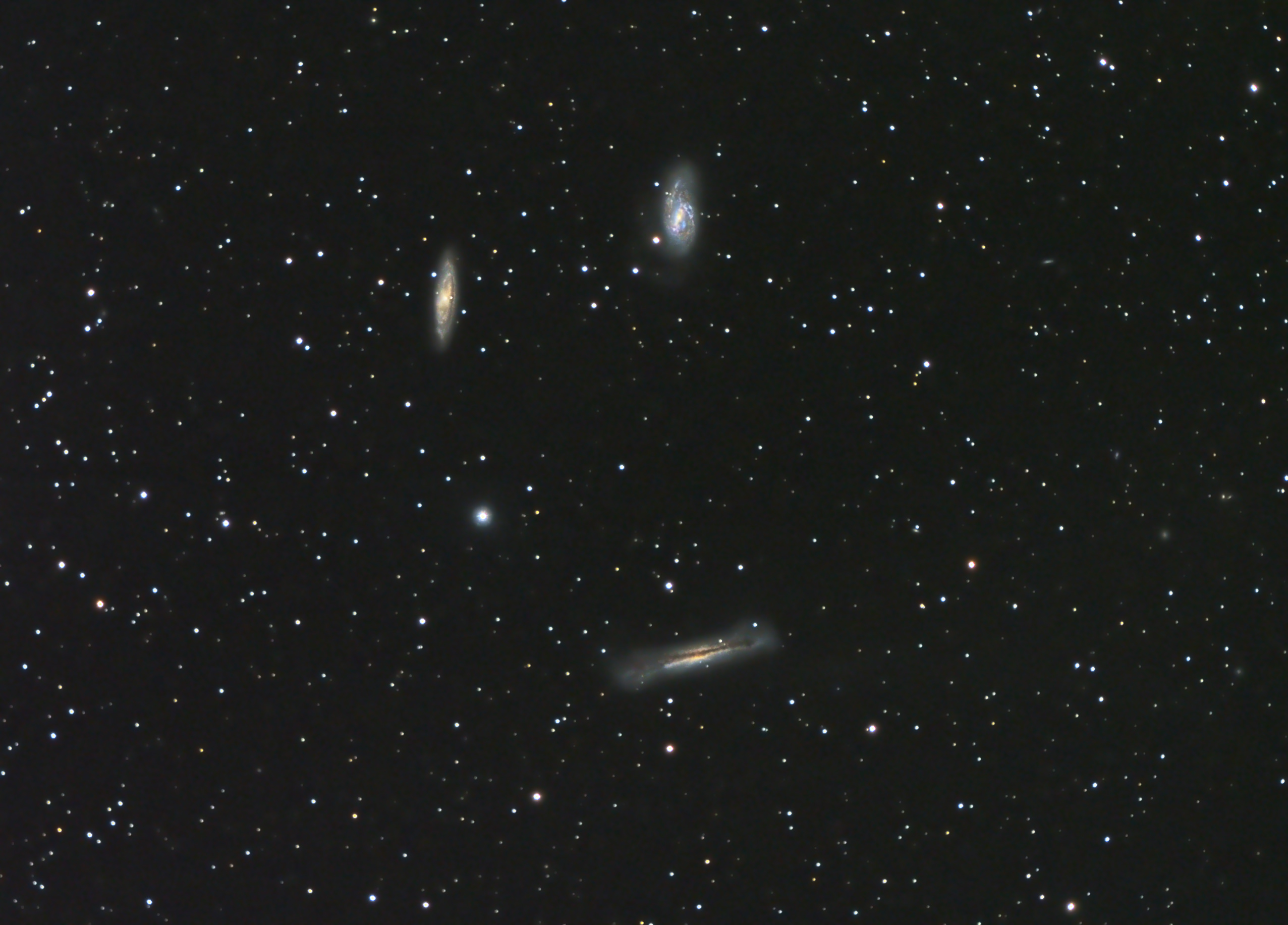 Looking back through my images I first took pictures of this group at Kelling back in spring 2010 .
Looking back through my images I first took pictures of this group at Kelling back in spring 2010 .
Somewhat fortuitously, after my last post of M81 & M82 a type 1a supernova has erupted in M82. After large amounts of rain, the clouds parted last night and I was able to take some additional pictures showing the event. All of the stars in this image, except for the additional one within the outline of the galaxy are local stars in our own Milky Way. The supernova is 12 million light years away which gives some idea of the power of this explosion.
